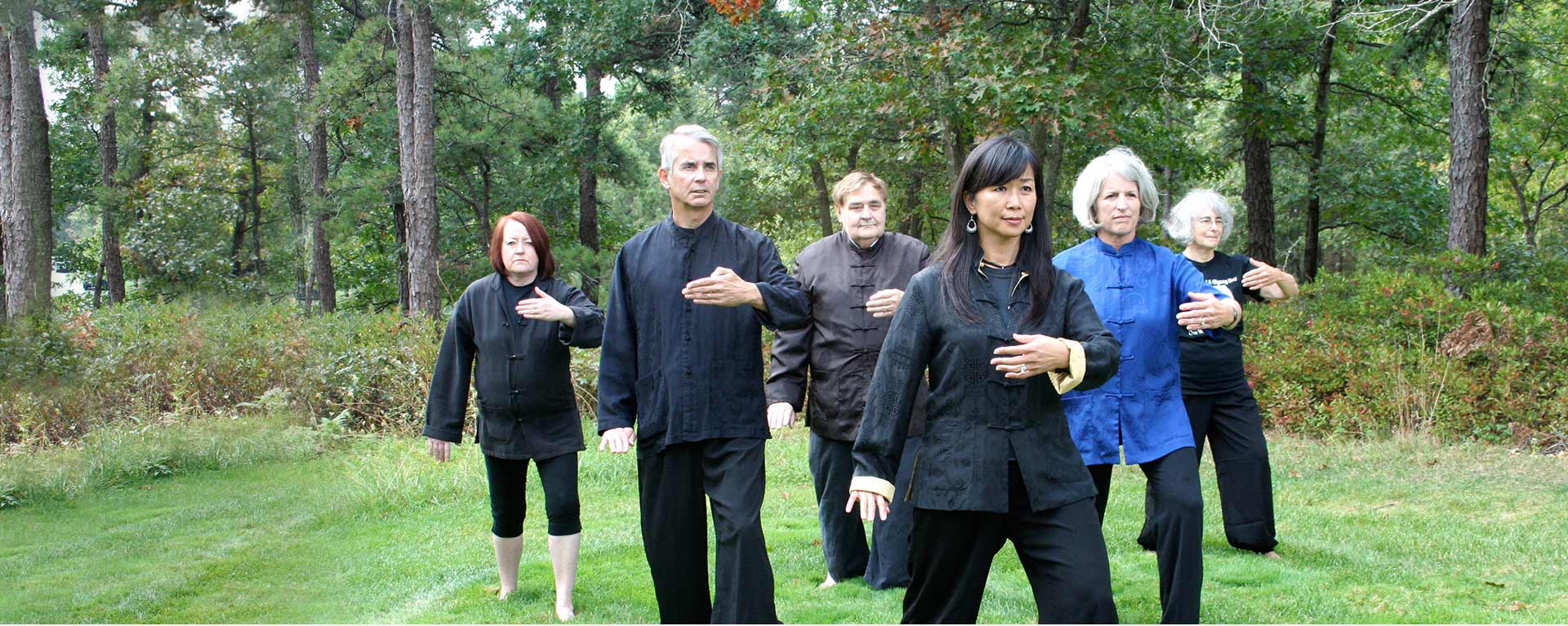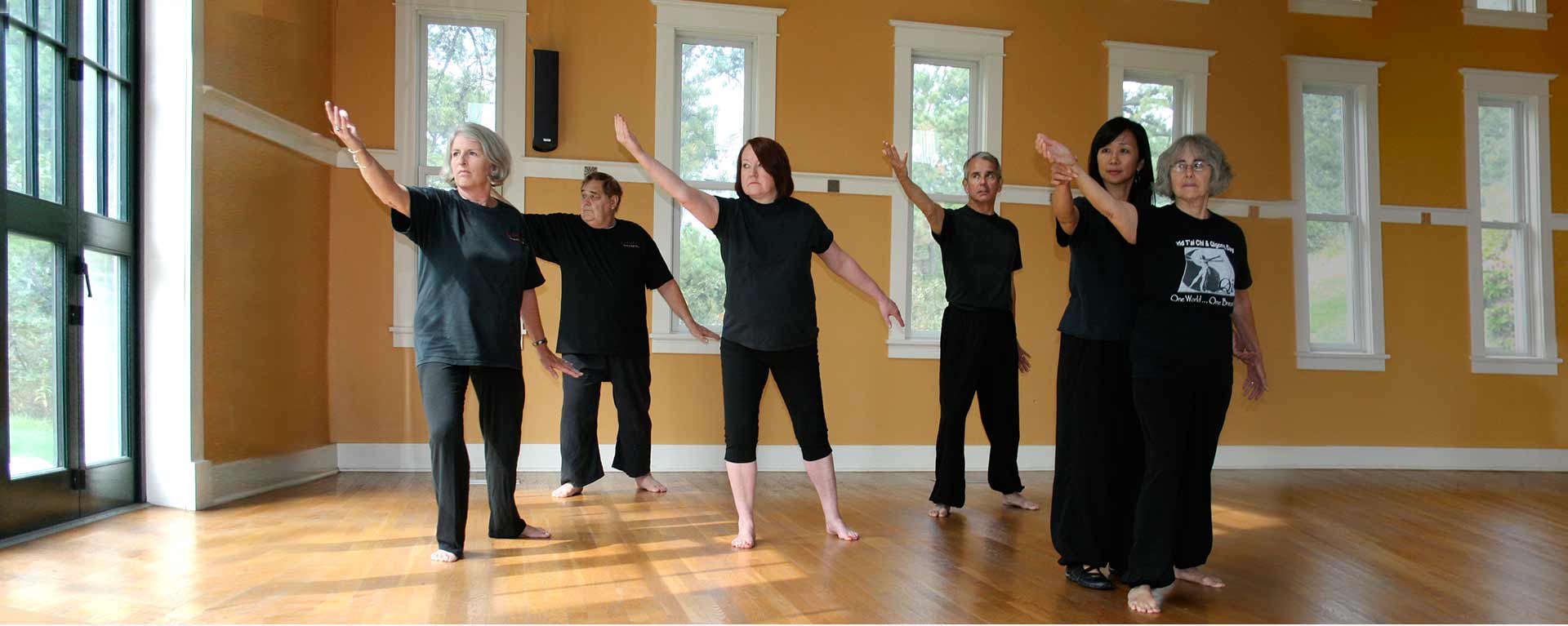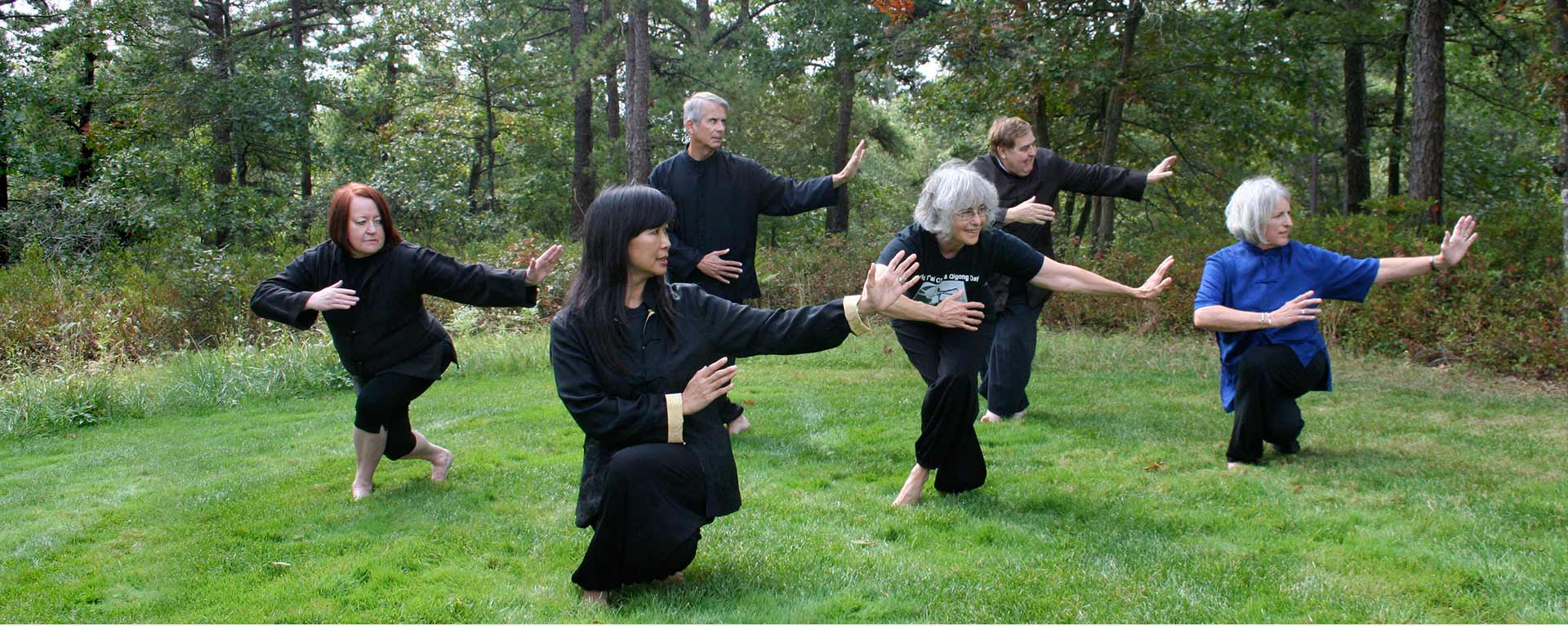Tai means great. Chi means the ultimate. Together these two words take in the entire universe, often translated as “Supreme Ultimate.” Chuan is generally translated as fist, meaning a practical manifestation. Tai Chi is therefore dynamic, a potential transformation integrating body and mind. It is internal and external.
Tai Chi generates vitality. It emphasizes balance and grace while relaxing body and mind. Students learn precise movements with coordinated breathing that develop supple physical strength, focused concentration, and improved memory.
Instructors at the Tai Chi and Qi Gong with Fang Association focus on the Yang style named after its creator Yang Chen-fu. The Yang style has many set forms, each designated by a number—128, 108, 88, 64, 24, 13, and 8 among the most popular. Our classes present four of these.
The shortest form, the 8-steps, focuses on a sequence of postures shifting from right to left. It is completed in less than two minutes. The 13-form repeats Tai Chi’s core movements and provides the basis for the longer forms. Another Yang style is the Cheng Man Ching 37 Steps. Cheng modified Yang’s 128 to make it more accessible and shorten its required time. The 13-form takes five to six minutes to complete; the Cheng Man Ching 37 Steps averages between six and seven minutes. The 24-form is similar to the 37 Steps and lasts four to five minutes. Students who learn two or more of these forms increase their approaches to gaining all the benefits of Tai Chi and add variety to their practice.
WEAPONS
Tai Chi Sword, Fan, and Dao
Some students practice Tai Chi forms using sword, fan, or dao (saber) to increase their flexibility and stamina.
These ancient disciplines are especially useful for practitioners of various sports, dancing, and other martial arts.



